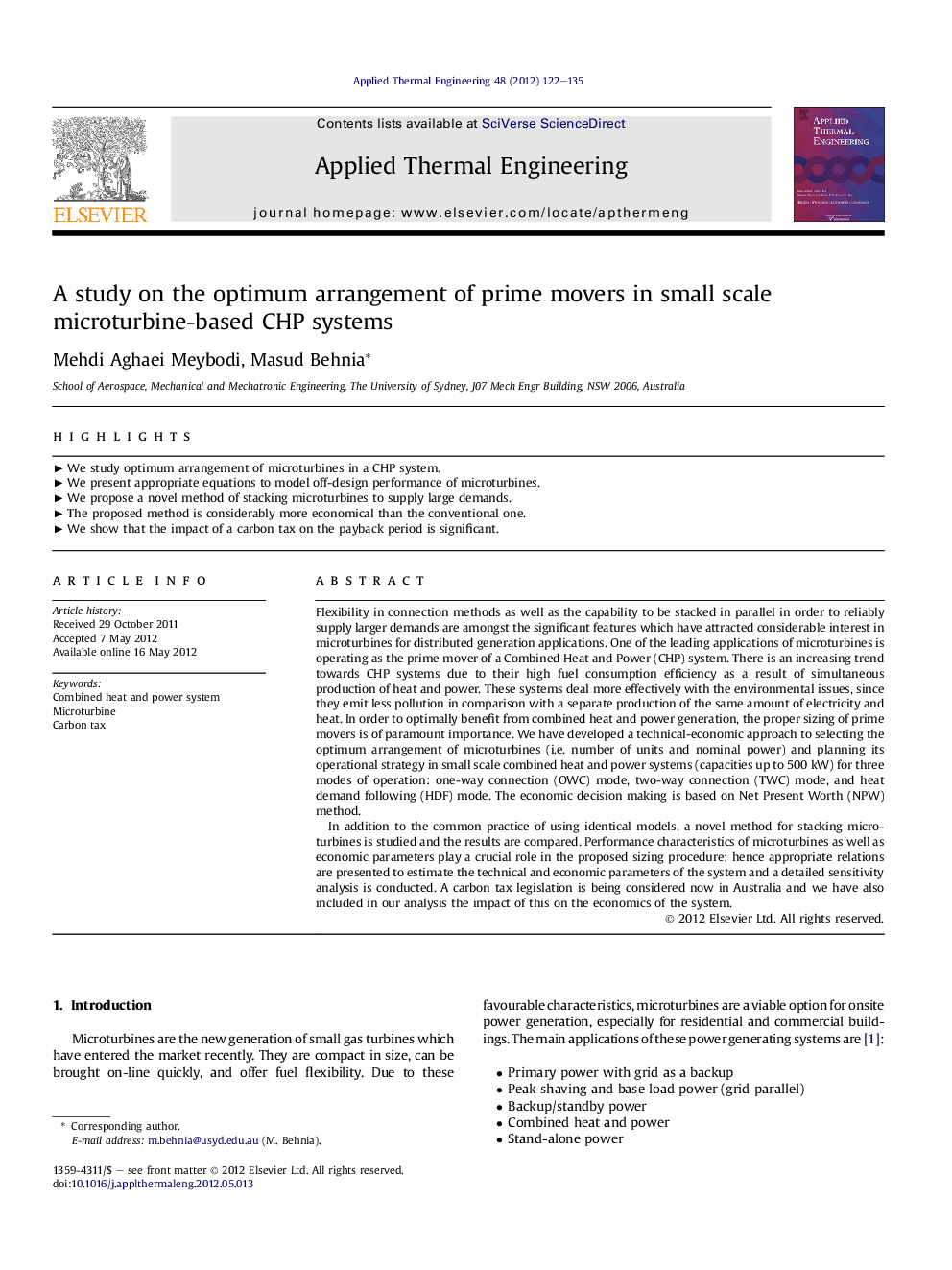| Article ID | Journal | Published Year | Pages | File Type |
|---|---|---|---|---|
| 647042 | Applied Thermal Engineering | 2012 | 14 Pages |
Flexibility in connection methods as well as the capability to be stacked in parallel in order to reliably supply larger demands are amongst the significant features which have attracted considerable interest in microturbines for distributed generation applications. One of the leading applications of microturbines is operating as the prime mover of a Combined Heat and Power (CHP) system. There is an increasing trend towards CHP systems due to their high fuel consumption efficiency as a result of simultaneous production of heat and power. These systems deal more effectively with the environmental issues, since they emit less pollution in comparison with a separate production of the same amount of electricity and heat. In order to optimally benefit from combined heat and power generation, the proper sizing of prime movers is of paramount importance. We have developed a technical-economic approach to selecting the optimum arrangement of microturbines (i.e. number of units and nominal power) and planning its operational strategy in small scale combined heat and power systems (capacities up to 500 kW) for three modes of operation: one-way connection (OWC) mode, two-way connection (TWC) mode, and heat demand following (HDF) mode. The economic decision making is based on Net Present Worth (NPW) method.In addition to the common practice of using identical models, a novel method for stacking microturbines is studied and the results are compared. Performance characteristics of microturbines as well as economic parameters play a crucial role in the proposed sizing procedure; hence appropriate relations are presented to estimate the technical and economic parameters of the system and a detailed sensitivity analysis is conducted. A carbon tax legislation is being considered now in Australia and we have also included in our analysis the impact of this on the economics of the system.
► We study optimum arrangement of microturbines in a CHP system. ► We present appropriate equations to model off-design performance of microturbines. ► We propose a novel method of stacking microturbines to supply large demands. ► The proposed method is considerably more economical than the conventional one. ► We show that the impact of a carbon tax on the payback period is significant.
